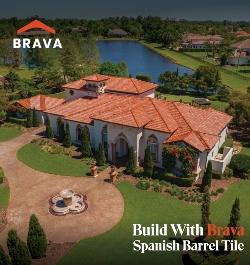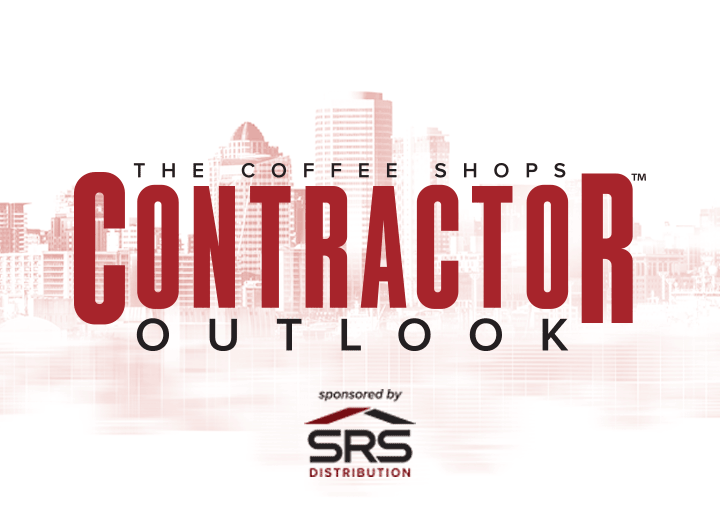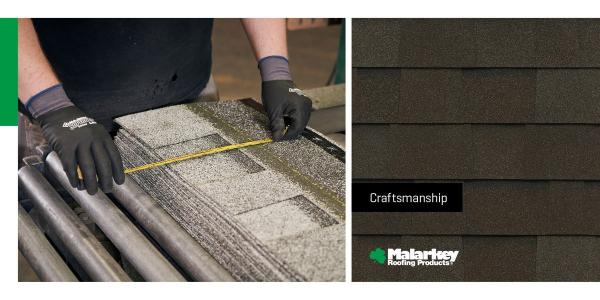Trial by fire: Understanding fire-resistant roofing
October 31, 2025 at 6:00 p.m.By Lori Jerome, PABCO Roofing Products.
From fire-ratings to material maintenance, here’s a close-up look into the world of fire-resistant roofing.
Across much of the United States, there has been a distinct uptick in wildfires and fire danger. And as we learn more about building resiliently, it has become apparent that roofing plays a huge role in protecting people and property from fires. In this article, PABCO Roofing Products explains how roofing plays a critical role in the face of fires and how to talk to your clients about proper fire protection.
What is a fire-resistant roof product?
It is important to understand that there is no such thing as a completely fireproof roof assembly. The correct term is fire-resistant – meaning the roofing system can withstand a certain level of exposure without igniting or allowing fire to spread.
Even the most fire-resistant materials can fail under extreme conditions. UL 790 Class A systems, for example, are tested to handle severe fire exposure, but given enough heat and time, any material will degrade.
Contractor tip: Homeowners often think they have to choose between durability and curb appeal, but asphalt shingles offer both. All PABCO Roofing Products shingles are Class A fire-rated, providing top-tier fire performance and they come in a wide variety of colors and styles, making them a practical and attractive choice in wildfire-prone areas.
Understanding a fire rating
Under the UL 790 Class A fire resistance standard, roofing is tested as a complete system, not just the surface material. The test includes three components:
- Spread of flame test: Measures how far flames travel across the surface in a set time. To earn Class A, the flame can’t spread more than six feet, and there can be no flaming debris falling from the deck.
- Intermittent flame test: Exposes the assembly to cycles of intense flame and cooling to simulate gusting winds carrying embers and reigniting materials. The roof must show no sustained flaming after the flame source is removed.
- Burning brand test: Places burning wood brands of a specific size and weight on the roof to simulate debris from nearby structures or vegetation. The roof system must prevent the brand from igniting the deck or burning through.
All of these are performed on the entire roof assembly – deck, underlayment, shingles, vents and accessories. If any one component allows ignition, excessive flame spread or deck penetration, the entire system fails.
Contractor tip: Because fire resistance depends on the whole assembly, asphalt shingle systems are a strong choice – they combine proven Class A performance with installation flexibility. That means you can pair PABCO Class A shingles with premium underlayments and ember-resistant vents to offer a complete, high-performing fire-resistant solution.
What material is best?
There is a misconception that metal roofs are always the most fire-resistant option. The truth is that metal can be an excellent option, but it’s not invincible. Metal at high temperatures can reach a failure point as well.
A Class A rating can apply to asphalt shingles, tile, composite products and metal – it's not exclusive to one material type. What matters is how the entire assembly is designed and installed.
Contractor tip: Use this conversation to match the roofing system to the homeowner’s needs, budget and style. While metal may have a reputation for durability, asphalt shingles often deliver the same Class A fire protection with added benefits:
- Lower cost compared to many metal options, making upgrades more attainable.
- Greater design variety, including colors, profiles and dimensional styles that mimic premium materials.
- Simpler repairs and replacements, since individual shingles can be replaced without disturbing large sections of the roof.
Framing the discussion this way reinforces that asphalt meets fire safety requirements while also offering practical and aesthetic advantages that homeowners value.
Maintenance is the key to success
Even the best-rated roofing system can be compromised by poor maintenance. Leaves in gutters, pine needles in valleys and debris near vents all act as fuel sources for embers.
Suggest these maintenance tips to your customers:
- Clearing roof valleys, gutters and around vents of debris
- Move woodpiles away from the home
- Trim tree branches away from the roofline
- Consider upgrading vent options when reroofing to create a more ember-resistant system
Contractor tip: A low-maintenance, durable roofing material like asphalt shingles can help homeowners stay wildfire-ready without constant upkeep. Pair your reroof services with simple seasonal cleaning that will give customers long-term protection without the cost or demands of other premium materials.
Fire codes across the country
Local wildfire building codes vary. Some areas follow the International Wildland-Urban Interface (WUI) Code, which combines fire-resistant construction standards with vegetation management requirements. Others go further – for example, many regions have banned cedar shake roofs entirely.
Stay informed about your local codes to help educate your customers and avoid costly mistakes.
Contractor tip: Asphalt shingles make it easier to meet both safety codes and homeowner style preferences. In states like Colorado, where cedar shake is prohibited in new construction, products like PABCO Paramount Advantage® give homeowners the look they love and the Class A protection they need, while remaining compliant with local regulations. The dimensional look and texture of Paramount Advantage make them an easy upsell for customers who want beauty, performance and peace of mind in one package.
Selling fire-resistant roofing
For homeowners in wildfire-prone areas, a Class A roofing system can mean the difference between minor damage and total loss. But most don’t understand how fire ratings work. By busting these misconceptions, you can:
- Justify system upgrades
- Educate on maintenance
- Align your recommendations with local codes
- Build long-term trust
Every wildfire season is a reminder that the roof of a home is the first defense. Help your customers truly protect their biggest investment.
Original article source: PABCO Roofing Products
Learn more about PABCO Roofing Products in their Coffee Shop Directory or visit www.pabcoroofing.com.






















Comments
Leave a Reply
Have an account? Login to leave a comment!
Sign In